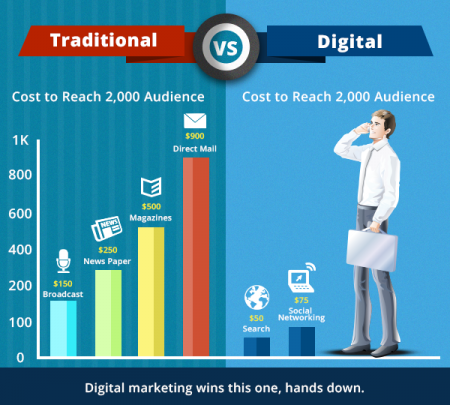Through digital marketing, we can make use of all available resources in digital channels to promote a brand’s product or set of services to people who use various digital platforms such as social media, electronic billboards and mobile devices.
The use of internet has brought diverse types of benefits. It is a pool of free information, where communication to other people in different parts of the planet is made possible. Majority of digital market falls within the grounds of the Internet, where a lot of small and big companies transfer to advertise their own business.
Web marketing became an important factor in sharing what companies can offer and has evolved through the years along with the changes in technology. All the more, the benefits of Internet have been maximised and become accessible to almost anyone through the rise of mobile devices, which lead to the shift of attention of marketers to the non-stop, growing market of mobile.
Mobile marketing and web marketing are the same, in the sense that both primarily depend on the use of Internet. Both marketing practice taps into web sections such as websites, social networking sites, video streaming services, messaging platforms and web ads but of course, there are several points on which we can distinguish these marketing practices.
With everyone going mobile, accessibility to the internet is a primary concern for most consumers. Mobile devices changed the way audiences use up digital media in ways we usually see, be it on our neighbourhood or along the streets. Most consumers are generally out of their homes and they do not have their laptops with them. There is an observed fall of PC sales in recent years and many people choose to possess a mobile device.
Mobile devices are very handy and can be brought anywhere you want. With many mobile data services provided by telecommunication companies and availability of WiFi in different shops and malls, the use of mobile presents preferable and better access to apps like Facebook, WeChat or Instagram. Millennials, the majority of consumers, even admit that they cannot live without their mobile devices and the internet.
Many large companies and corporations know this, so they invest more on mobile marketing schemes to get more audiences to subscribe to them. Social media for business has a lot of opportunities that can be used to increase awareness and sales to a company’s brand through integrated marketing tactics.
With a decent social media marketing strategy, a company can engage their audience who are typically walking around city streets with campaigns that utilise posters or other digital platforms like digital billboards to go to their social media page. However, this can be limited to people who use pc or laptops. While most people prefer mobile devices rather than desktop computers or notebooks, there is also a big difference in display features of these digital devices.
Mobile devices are small so its interface is limited to the size of a particular line of mobile device. Compared to desktop devices, mobile browsers function differently from web browsers. Ads cannot fit into the display allowed for the screen. In mobile apps, they usually run one ad at a time. This shows a good mobile strategy where each ad can be seen individually whereas in web browsers, ad spaces are so crowded with many different brands and colourful advertisements that people tend to ignore them.
A mobile-friendly site must also contain suitable content for a business’ audience, so it is imperative that they load faster and can be found easier. A well-planned content marketing strategy and SEO can help a business be on top of the search engine results. Both web and mobile marketing can observe the behaviour of their respective markets and prepare plans for their next strategies. However, mobile marketing poses diverse doors in engaging consumers.
Take note that the growing needs of the consumers must be observed, where user experience is consciously and primarily valued by the target audience.
Resources: ihdigital.co






